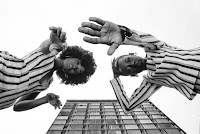Snap the Style
Capturing Style: Essential Fashion Photography Techniques
Fashion photography is more than just taking pictures of clothes—it's about telling a story, expressing identity, and capturing the essence of style. Whether you're shooting for a magazine, a brand, or your own portfolio, mastering the right techniques can elevate your images and make them stand out. Here are some of the most effective fashion photography techniques to help you showcase style like a pro.
1. Master the Lighting
Lighting is one of the most critical elements in fashion photography. The way light hits your subject can dramatically change the mood, highlight textures, and define the silhouette of clothing.
-
Natural Light: For a soft, natural feel, shoot during golden hour—just after sunrise or before sunset. Cloudy days also offer diffused, flattering light.
-
Studio Lighting: Use softboxes, beauty dishes, or ring lights to create controlled environments. High-key lighting (bright and even) works well for clean, editorial styles, while low-key lighting (darker with strong contrast) can bring out drama and mood.
Experiment with backlighting, side lighting, and reflectors to shape the look you want.
2. Pose with Purpose
A good pose tells a story and showcases the fashion piece in the best possible light. Encourage models to move naturally, shifting their weight, interacting with their environment, or playing with the fabric of their clothing.
-
Movement: Ask your subject to walk, spin, or flip their hair. This creates dynamic shots that feel alive and spontaneous.
-
Angles: Try shooting from different perspectives—low angles can add power and height, while high angles can create vulnerability or elegance.
Avoid overly stiff or unnatural poses unless you're going for a high-fashion editorial look.
3. Use Composition Creatively
Strong composition helps draw the viewer’s eye and emphasizes the fashion piece. Here are a few compositional tips:
-
Rule of Thirds: Place the subject off-center to create visual interest.
-
Leading Lines: Use backgrounds or architectural elements to guide the viewer’s eye toward your subject.
-
Negative Space: Allow room around the subject to let the fashion breathe—especially effective in minimalist shoots.
Try framing your subject with elements like doorways, windows, or plants to add depth and context.
4. Focus on Details
Sometimes the beauty of fashion lies in the finer details—stitching, fabric texture, accessories, or the way light bounces off sequins. Don’t be afraid to zoom in or crop tight.
-
Macro Shots: Use a lens with a short focal length to capture embroidery, patterns, or layered fabrics.
-
Styling Close-Ups: Highlight a statement necklace, a unique sleeve cut, or a handbag clasp.
These shots complement full-body images and add richness to a fashion story.
5. Tell a Story with Styling
Fashion photography works best when it communicates a narrative. Styling helps you achieve that. The right combination of clothes, accessories, hair, and makeup tells your audience what kind of person the model is and what world they live in.
-
Editorial Shoots: Choose a theme and build the shoot around it—vintage glam, streetwear rebellion, futuristic minimalism, etc.
-
Consistency: Make sure everything from the color palette to the setting supports the mood and message.
A strong story helps your photos feel intentional and unforgettable.
6. Pick the Right Location
The setting of your shoot can enhance or distract from the fashion. Choose a background that complements the clothes, not competes with them.
-
Urban Settings: Great for edgy streetwear or modern minimalism.
-
Natural Landscapes: Ideal for flowy, romantic, or bohemian styles.
-
Studio Shoots: Perfect for clean, controlled environments where the focus is solely on fashion.
Use the environment to your advantage—mirrors, shadows, stairs, and reflective surfaces can all add interest.
7. Edit to Enhance, Not Overwhelm
Post-processing is a powerful tool, but it should enhance the image without stealing the spotlight.
-
Color Correction: Adjust tones to match your intended mood—warm for cozy, cool for high fashion.
-
Retouching: Clean up blemishes or distractions, but maintain texture and authenticity.
-
Cropping and Framing: Tweak the final image to improve composition if needed.
Editing is your chance to add the final polish while staying true to your vision.
Final Thoughts
Fashion photography is an exciting blend of technical skill and creative expression. By focusing on lighting, posing, composition, styling, and post-processing, you can consistently capture images that celebrate style and leave a lasting impression.
Whether you’re a beginner or a seasoned photographer, remember: every great fashion photo starts with a vision. Practice often, experiment boldly, and always let the style speak.











Comments
Post a Comment